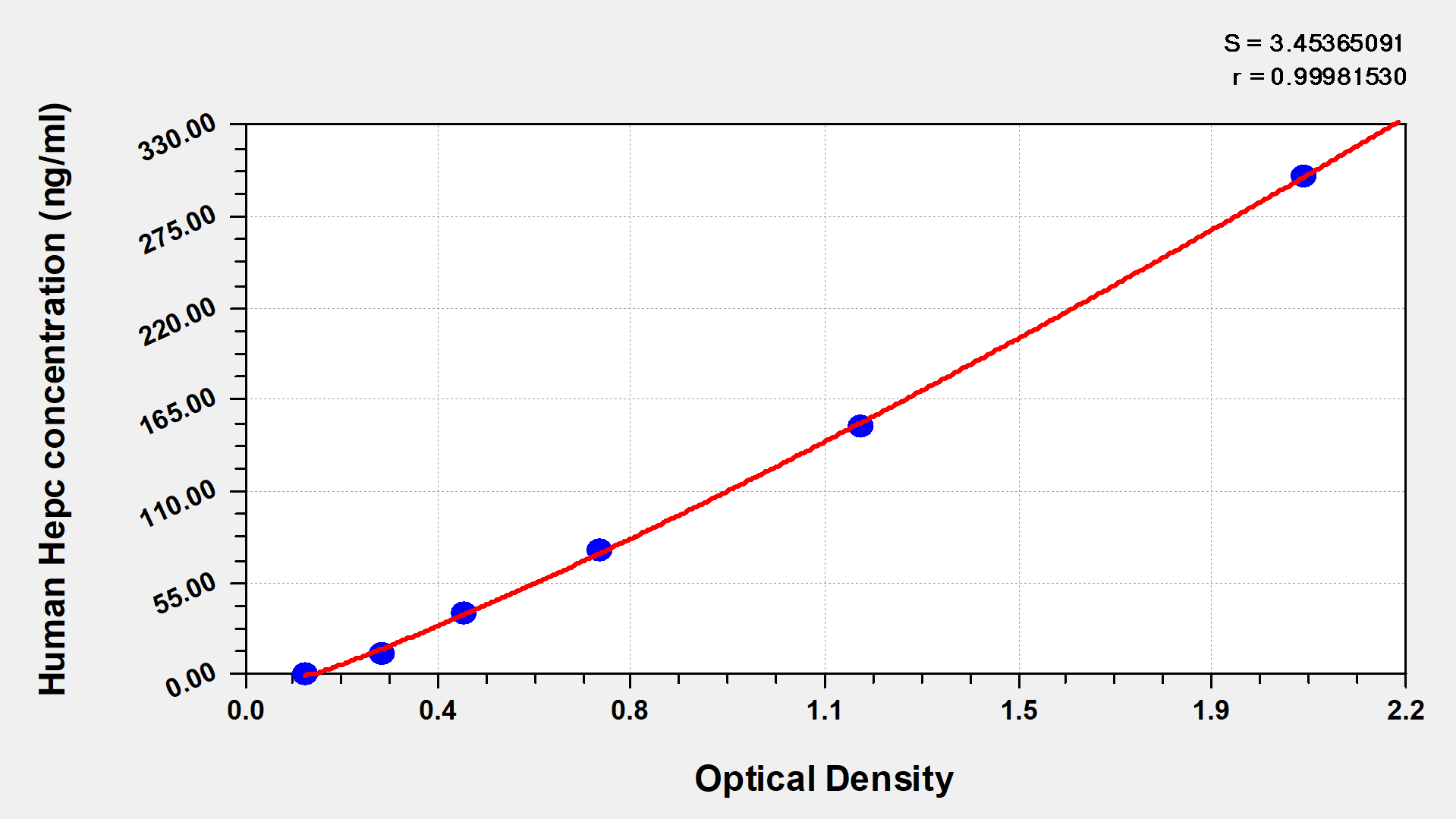The Human hepcidin (Hepc) ELISA Kit is used to quantitatively measure the levels of hepcidin in human serum, plasma, tissue homogenates, or cell lysates. This assay employs the quantitative sandwich enzyme immunoassay technique, in which hepcidin in the samples or standards are sandwiched between pre-coated hepcidin antibody and HRP-conjugated antibody specific for hepcidin. Following a wash to remove any unbound reagent, the TMB substrate solution is added to the wells and color develops in proportion to the amount of hepcidin bound in the initial step. The color development is stopped and the intensity of the color is measured at 450 nm via a microplate reader. This kit displays many advantages, including sensitivity, specificity, precision, linearity, and recovery. The product instructions are access to more information.
Hepcidin, the central regulator of systemic iron homeostasis, tightly influences erythrocyte production. It acts by modulating cellular iron export through ferroportin to plasma and extracellular. Hepcidin binding to ferroportin leads to internalization of the receptor-ligand complex and their eventual degradation. The expression of hepcidin in hepatocytes is regulated by iron-mediated pathways, inflammation signals, and erythropoietic drive. High hepcidin levels block intestinal iron absorption and macrophage iron recycling, causing iron-restricted erythropoiesis and anemia. Low hepcidin levels favor bone marrow iron supply for hemoglobin production and red blood cell synthesis.






